Posted by Nodus Labs | February 4, 2021
Brainstorming Techniques for Writing using Text Networks
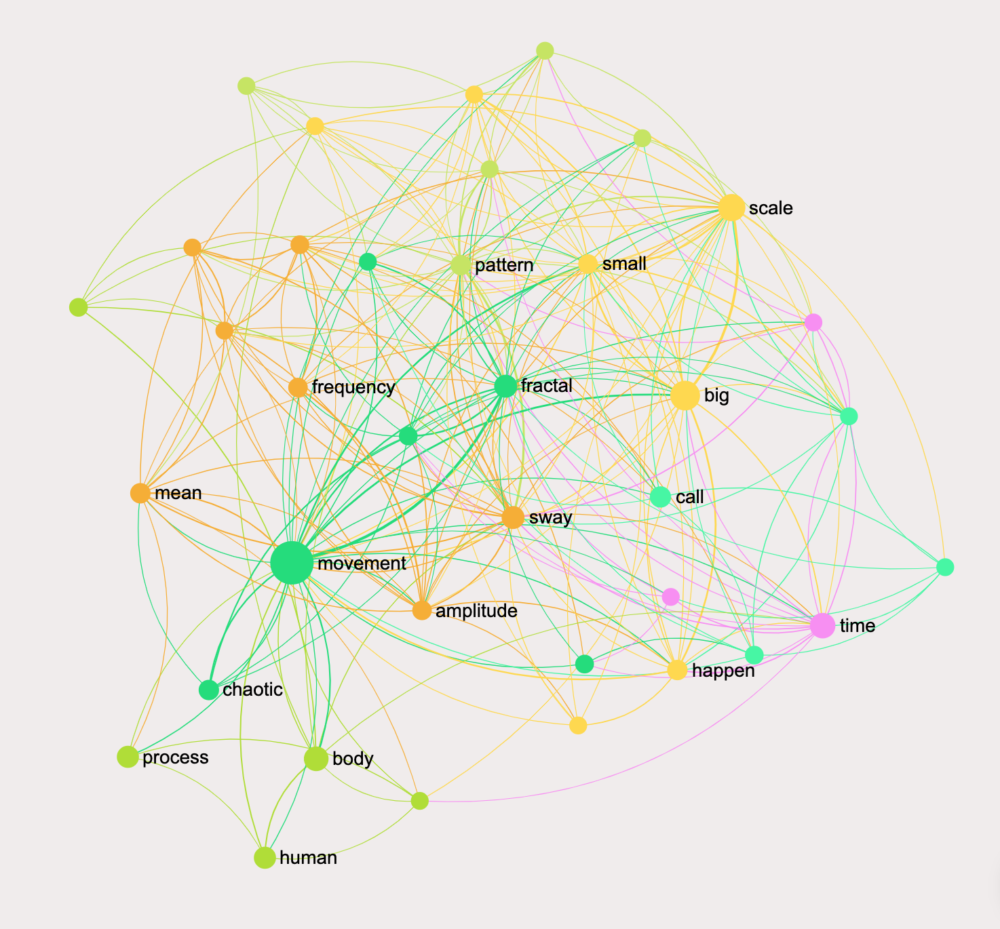
Most brainstorming techniques have one thing in common: they are about connecting ideas. The next step is to put those ideas to writing. In this article, we will demonstrate a new approach to brainstorming using text network analysis. We will be using the InfraNodus brainstorming tool, which converts plain text into a mind map and then proposes the new connections between them. Watch the video below for a short introduction or read more to learn how it works.
Step 1: Generating Ideas
The first step in any brainstorming process is to generate ideas. Most of the brainstorming templates and tools propose to start from building a mind map or simply adding post-it-like notes on a whiteboard.
While mind maps can be very useful for organizing your thoughts, it may be not easy to start building one as they are hierarchical at their core. You need to start with a central idea and have the subcategories more or less figured out.
An alternative is to build a rhizomatic mind map using text networks, where you let your ideas be connected based on their natural co-occurrence.
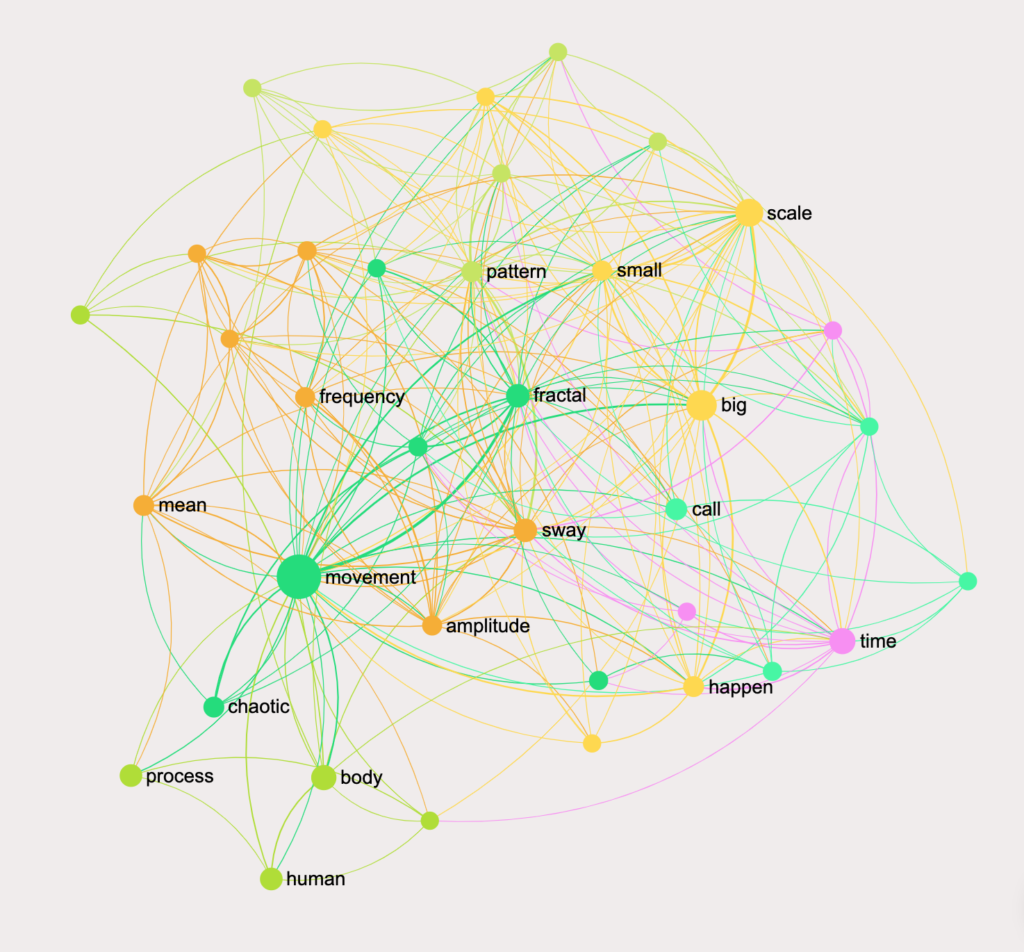
The basic workflow is:
- start writing your ideas
- they will be visualized as a network graph
- your words are the nodes; their co-occurrences are the connections
- gradually you will start seeing patterns forming on the network graph
- you can use the network to identify the main topical clusters and the most influential terms
- you can also use the network to identify the structural gaps: the clusters of ideas that should be connected but are not yet (e.g.: what if I connect A to B?)
- based on 5 and 6, make new connections by writing more text and generating the new ideas
- remove a few influential nodes from the graph to see what’s hiding behind them
- make new connections, get the removed nodes back into the graph
- reiterate 4 to 9
The process above can be done with the InfraNodus brainstorming app. Its recommendation system will guide you through the workflow above and recommend the new connections for your ideas.
For instance, if I am to write a text about fractal variability (and the related phenomena), I will start by writing a few sentences related to the topic. Once I write them in, I’ll have the graph visualized, and the main topics (2) identified based on text network analysis:
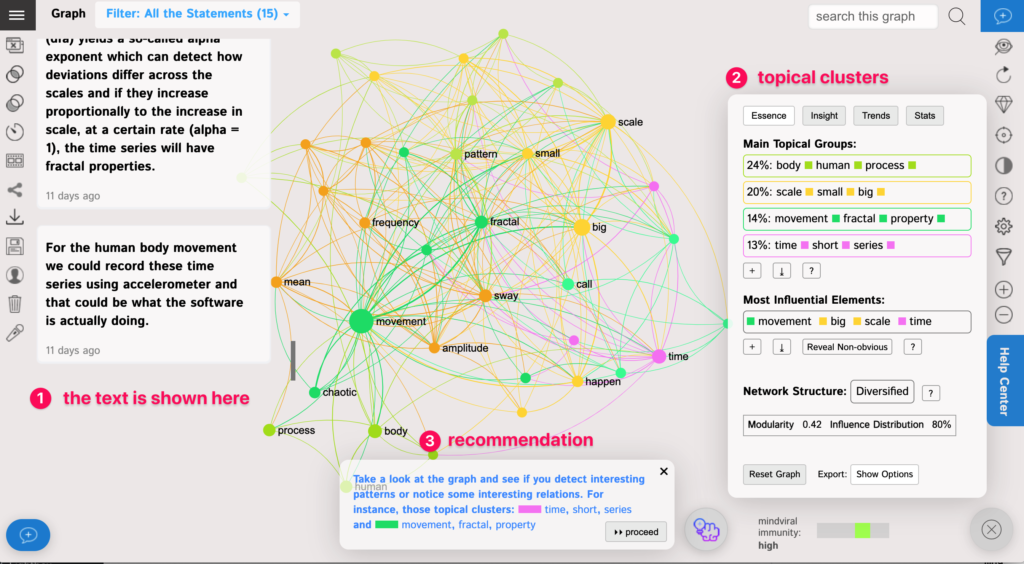
I can then use this information to think of the new connections and to add some more ideas. I can also use the recommendation (3) to help me advance further.
Step 2: From Brainstorming Ideas to a Coherent Narrative
Once we have added a sufficient number of ideas, it is time to turn them into a coherent narrative.
The first thing that can be done is to review the most influential topics in the Analytics panel and to check the “Essential Statements” tab. These will form the core of the narrative:
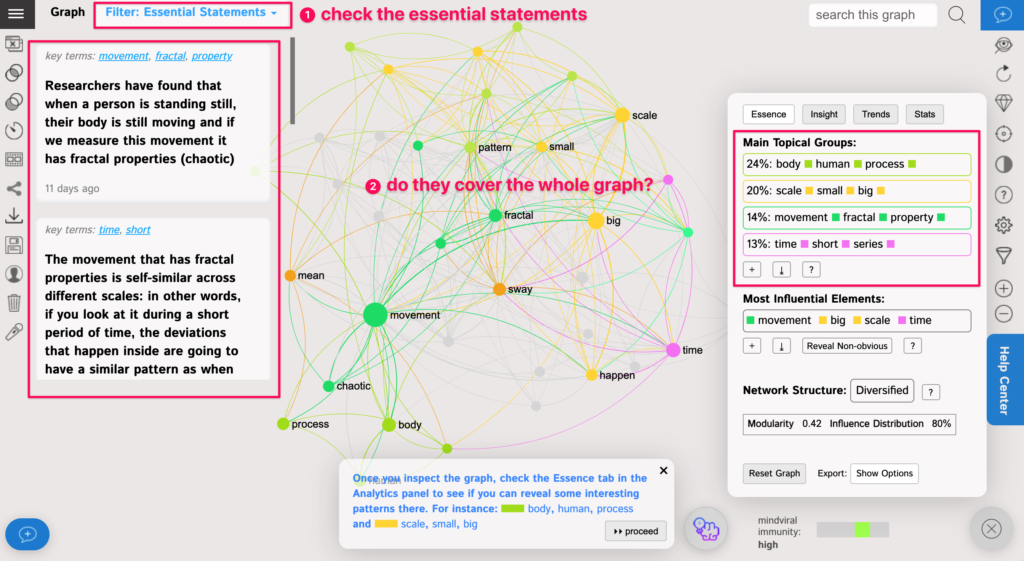
These essential statements will also be highlighted in the graph, and at this point, it can be useful to check if they cover the whole graph and all the pertinent topics. If not, you can add some more ideas.
If the essential statements are identified correctly, we can create the main opening statement, which should be concise and encompass the text’s main idea.
If you are doing it using InfraNodus, click the Interpret button in the editor on the left, so you can start writing on top of the graph.
A popular writing technique is to phrase the first sentence as a loop that summarizes the main idea (e.g. “Fractal variability is an important feature of natural systems which usually indicates a high level of adaptability”). The consequent statements will be unfolding this first idea in iterations. Each iteration adds a little bit more detail to the narrative.
To exemplify this approach with a graph:
1) Start by touching upon the main topics and the most influential terms at the beginning, providing an overview of the subject in 1 or 2 sentences,
2) Then start expanding the narrative towards the periphery passing through the topical clusters in the graph at each iteration.
3) Every iteration your new narrative will be highlighted in gray on top of the existing graph. This way you can see how many ideas you covered with the new narrative generated on top of your existing notes.
4) Verify the Analytics panel, the Insight panel, and the graph itself to see if you covered the main topics.
5) Once the whole graph is covered in gray, you’ve covered most of your original ideas and notes. You can then export your text as a text file and run it through a grammar and style check software like Grammarly or Hemingway Writer, to polish it further.
This is how it’s going to look:
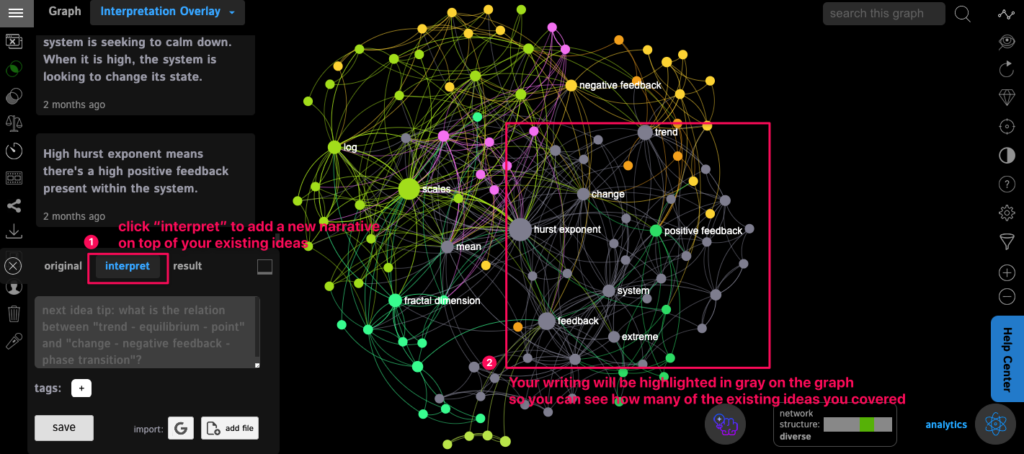
Try out this approach using the InfraNodus text network brainstorming tool. You can import your existing Evernote or RoamResearch notes with it, visualize the connections between them, and then use InfraNodus to generate a coherent narrative on top of your ideas.

